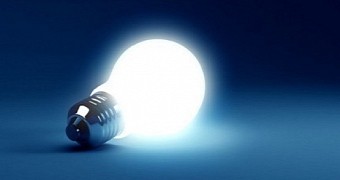Earlier this week, researchers employed by Japanese company Mitsubishi Heavy Industries proudly announced the wireless transmission of 10 kilowatts of power over a distance of 500 meters (about 1,640 feet).
On the same day that Mitsubishi Heavy Industries released the report detailing their work, scientists with the Japan Aerospace Exploration Agency went public with the news about having achieved the same thing, albeit working with less impressive figures.
Long story short, the Japan Aerospace Exploration Agency announced the transmission, once again wirelessly, of 1.8 kilowatts between a source and a target placed precisely 55 meters (170 feet) from one another.
Sheer coolness aside, there is one other reason these experiments made headlines and got as much attention as they did: like a whole lot of technological and scientific advances before it, wireless energy has the potential to rock our world.
How wireless power works
Not that this one piece of information needs explaining, but we’ll go ahead and point it out anyway, just to be thorough: wireless energy boils down to transmitting power without having to use any connectors. Yup, we’re talking about sending energy across an air gap.
Contrary to what some might assume, the concept of wireless power isn’t exactly new. In the 1890s, Nikola Tesla not only talked about it but also managed to demonstrate it. More precisely, he remotely powered a few lights in the ground at one of his labs.
In its rudimentary form, the wireless transmission of energy involves inductive coupling. Here’s how it works: electrical current sent to a wire bent into a coil creates a magnetic field that is picked up by another coiled wire and creates an electrical current in it.
This method of sending energy, known as inductive charging, is employed by pretty much all electrical toothbrushes. The first coiled wire sits in the base that is connected to a power source, the second one is found in the toothbrush itself and feeds the battery.
If the magnetic fields in the forming around the two coils resonate at the same frequency, power can be transmitted over a distance greater than, say, that between the base of an electrical toothbrush and the toothbrush itself.
In fact, this other means of wireless power transfer would make it possible to use just one source coiled wire and the magnetic field generated by it to charge not just one but more gadgets or gizmos.
Kicking it up a notch
Not having to use cables to charge your phone or your laptop sounds pretty impressive, and rightfully so. Still, the fact of the matter is that scientists have their mind set on much greater accomplishments than designing the coolest electrical toothbrushes ever to fight cavities.
In a nutshell, they want to figure out a way to wirelessly transmit energy over considerable distances, maybe even from space all the way down to Earth. To get this job done, they had to turn their attention to microwave energy.
The idea is to send microwave energy to so-called rectifying antennae designed to capture it and turn it into direct-current electricity. As long as the object you want to power is within the range of the source of microwave energy, it will keep up and running.
The perks of wireless power
We all know how annoying having a heck lot of cables lying around our homes can prove, especially if one happens to have a pet that simply loves and adores chewing on them. Constantly losing our power cords is not a very pleasant experience either.
With wireless power, we would no longer have to worry about any of this. We could easily recharge our phones while lying in our beds and not once getting up to find the power cord and plug it in, and having our laptops run out of battery would become a thing of the past.
However, it’s not our comfort and peace of mind that scientists are interested in when experimenting with wireless energy transmission and pushing the boundaries of this emerging technology. No, Sir, they have far greater achievements in sight.
The idea is to find a way to put together and launch spacecraft designed to harvest sun energy from high up in the sky and wirelessly beam it back to Earth for us to use. Since sun energy is one of the greenest power sources, this would help limit climate change and global warming.
Besides, wireless power would considerably reduce the costs associated with manufacturing and maintaining direct connectors, and would make it easier to keep electrical medical equipment sterile by eliminating the need to constantly check up on them and feed them energy.
Add to this the fact that this technology could beam energy to disaster struck areas and it’s easy to figure out why scientists and ordinary folks alike cannot wait for wireless energy transfer to move from laboratory experiments to being part of our daily life.

 14 DAY TRIAL //
14 DAY TRIAL //